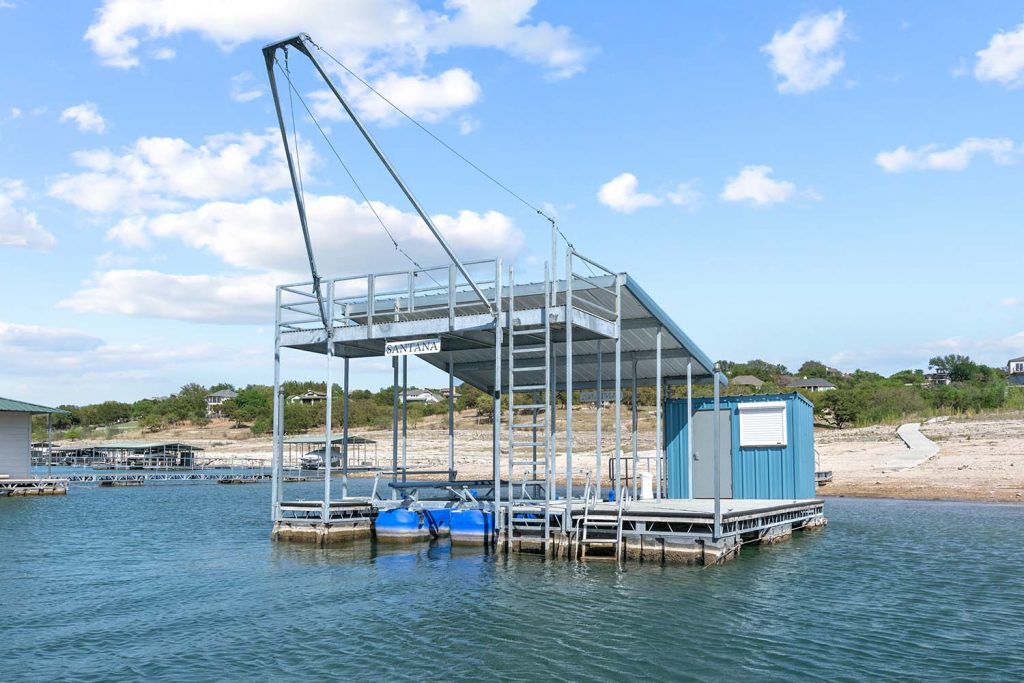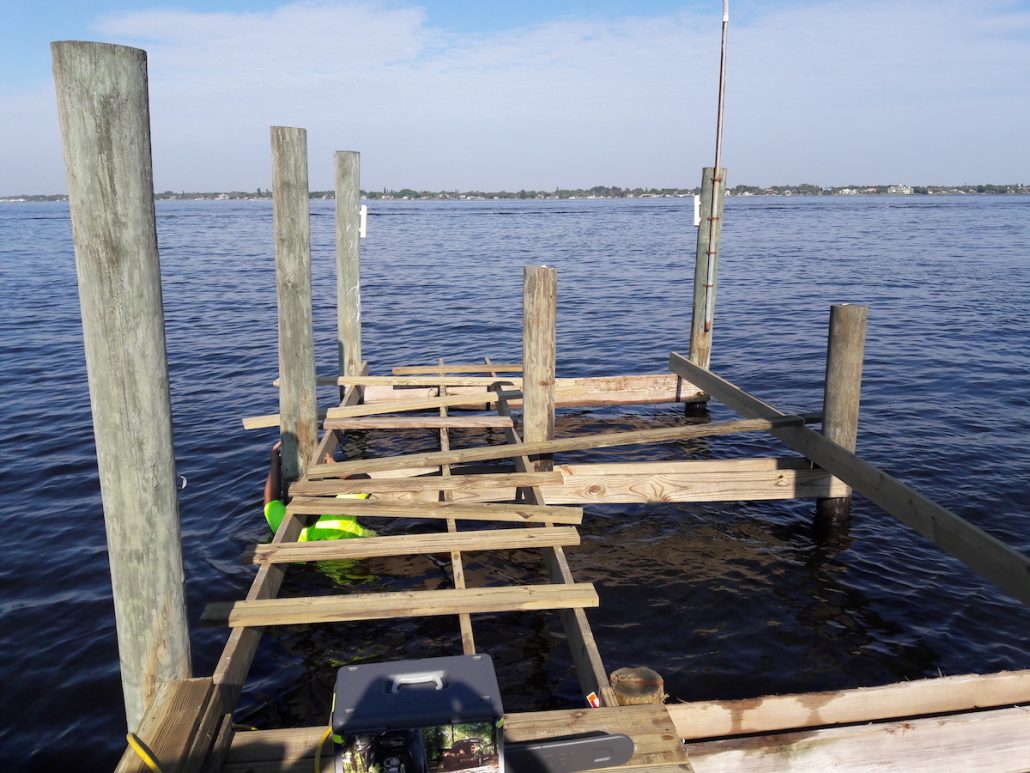Vital Overview to Economical Dock Repairs for Homeowners
Vital Overview to Economical Dock Repairs for Homeowners
Blog Article
Efficient Dock Repair Work Techniques: Guaranteeing Structural Stability
Making sure the architectural honesty of docks with reliable fixing strategies is vital for the durability and security of aquatic centers. Ultimately, choosing the right repair service products, such as corrosion-resistant alloys and composite materials, is critical for toughness.
Analyzing Dock Damage
Analyzing dock damages is a critical first action in ensuring the architectural honesty and safety and security of any kind of docking center. Secret elements to take a look at include the dock's foundation, pilings, decking, and equipment (Dock Repairs).
Structural engineers or qualified assessors typically execute these analyses making use of specialized strategies and devices. As an example, underwater inspections could utilize sonar equipment or from another location operated lorries (ROVs) to identify submerged damage. Over water, visual examinations are enhanced by utilizing wetness meters and various other analysis tools to reveal underlying problems not immediately noticeable to the nude eye.

Finding Repair Materials
Picking the appropriate repair materials is a pivotal action in the dock remediation process, one that directly influences the longevity and performance of the fixed framework. Product option have to be driven by factors such as ecological problems, load-bearing needs, and compatibility with existing dock parts. Timber is a typical selection for anchors due to its natural resilience and visual allure. Choosing the best type of wood, such as pressure-treated lumber or normally rot-resistant types like cedar or teak, is critical to hold up against water atmospheres.
Along with wood, composite products are increasingly preferred due to their durability and reduced maintenance demands. Composites, normally made from a blend of plastic and timber fibers, offer exceptional resistance to rot, insects, and UV damages. For steel docks, picking corrosion-resistant alloys such as galvanized steel or marine-grade aluminum is necessary to avoid corrosion and ensure architectural honesty in saline water conditions.
Epoxy resins and marine-grade sealants are vital for repairing cracks and sealing joints, supplying a water-proof barrier and enhancing the dock's general toughness. By diligently selecting premium materials, dock repair services can attain long-lasting results, thus securing versus future destruction and making certain secure, reliable use.
Architectural Reinforcement Methods
Reliable structural support strategies are crucial in making certain the stability and durability of dock repairs. One essential technique includes using steel or composite reinforcement bars (rebar) within concrete structures. Rebar offers additional tensile stamina, protecting against fractures and dispersing lots much more uniformly. This method is particularly effective for anchors revealed to hefty lots or extreme environmental problems.
Another essential technique is the application of fiber-reinforced polymers (FRP) These products use high strength-to-weight ratios and excellent resistance to deterioration, making them optimal for reinforcing wood or concrete anchors. FRP can be used in strips or sheets and bonded with epoxy materials to improve architectural stability.
Bracing and securing systems also play an essential duty in structural support. Cross-bracing, utilizing steel or wooden beams, can combat lateral forces, reducing persuading and movement. Securing systems, such as helical piers or driven heaps, a fantastic read supply a stable foundation by transferring tons to much deeper, much more secure soil layers.
Last but not least, the integration of load-distribution plates can aid distribute weight a lot more equally throughout the dock's surface area, minimizing localized stress and anxiety points. These methods jointly guarantee that anchors continue to be robust and secure, with the ability of withstanding the rigors of their functional setting.
Advanced Repair Work Techniques

One more sophisticated method entails underwater welding, which allows for repair work to be conducted without the demand to dewater the area. This technique is specifically useful for addressing architectural issues in immersed dock components, making certain very little disturbance to operations. Improved welding strategies, coupled with robot systems, supply precision and dependability, consequently prolonging the lifespan of the dock.
In addition, cathodic security systems are carried out to stop deterioration in metal dock frameworks. By utilizing sacrificial anodes or satisfied current systems, these strategies successfully alleviate the electrochemical processes that lead to product degeneration.
Finally, advanced surveillance modern technologies, such as structural health tracking (SHM) systems, offer real-time information on the problem of dock structures. These systems enable positive upkeep and prompt interventions, inevitably making sure the long-term architectural integrity of the dock.
Upkeep and Avoidance
Maintenance and avoidance are fundamental concepts that underpin the durability and security of dock frameworks. Regular examinations are critical, permitting early discovery of wear and tear, prospective weak points, and ecological influences. A positive technique, involving routine look for deterioration, rot, and structural shifts, reduces expensive repair work and lengthens the dock's functional life.
Precautionary procedures need to include applying protective finishings to metal components to defend against corrosion and utilizing cured wood to resist degeneration. Additionally, making sure appropriate water drainage and ventilation can stop water accumulation, which is an usual source of architectural destruction. Incorporating high quality materials and sticking to producer standards throughout construction and fixing phases also play essential roles in boosting toughness.

Educating employees in dock upkeep ideal practices makes certain constant application of preventative measures. Leveraging technical breakthroughs, such as drones for inspections and sensing units for real-time surveillance, can even more enhance upkeep efforts. By focusing on maintenance and avoidance, dock proprietors can ensure structural integrity, operational security, and cost-efficient management over the dock's life expectancy.
Verdict
To conclude, maintaining the architectural stability of aquatic facilities necessitates thorough dock fixing strategies. Complete assessments using advanced tools uncover both noticeable and concealed damages, while the option of ideal repair materials enhances sturdiness. Executing architectural reinforcement techniques addresses anxiety points efficiently. Advanced fixing strategies, combined with regular upkeep practices, make sure the dock stays operational and safe under diverse environmental conditions. Adopting these approaches substantially prolongs the life-span and functionality of marine facilities.
Ensuring the architectural integrity of docks with efficient repair work methods is extremely important for the longevity and safety of marine facilities.Selecting the suitable repair work materials is a pivotal action in the dock reconstruction procedure, one that directly affects the durability and performance of the fixed framework.Reliable structural reinforcement techniques are important in guaranteeing the security and long life check it out of dock repair work. By prioritizing maintenance and prevention, dock proprietors can ensure structural stability, functional safety, and cost-effective administration over the dock's lifespan.
In final thought, keeping the structural integrity of aquatic facilities necessitates extensive dock repair work techniques.
Report this page